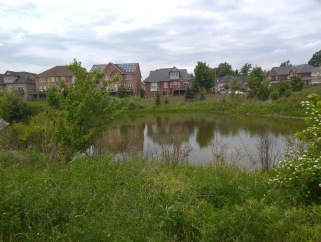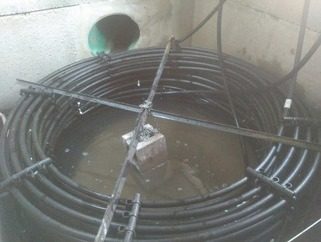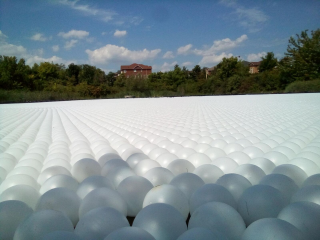Piloting Innovative Urban Runoff Thermal Mitigation Strategies
Courtesy of Erik Janssen
During warm weather, urban surfaces like pavement and rooftops heat up quickly as they absorb and store heat from the sun. It follows that the stormwater shed from these surfaces during rain events is significantly warmed. This effect is further increased by stormwater management ponds, a common feature in many urban and suburban areas, as the stormwater is allowed to sit and absorb even more solar heat before discharging to the watershed.
This is a problem because the elevated temperatures negatively impact aquatic ecosystems. Currently, the Ministry of Natural Resources and Forestry suggests a maximum temperature of 24°C for the protection of endangered redside dace, but even cooler temperatures are preferred for brook trout and other headwater species. Without intervention, pond outflows can surpass 30°C.
Efforts to mitigate the impact have given rise to several strategies and technologies meant to cool stormwater pond outflows. These include: bottom draw outlets, cooling trenches, subsurface trench outlets, automated discharge controls, shading, improved pond design and the application of stormwater management facilities without a permanent pool. However, these strategies vary in their feasibility, effectiveness and maintenance costs, and there is currently no consensus on the best options for both new construction and existing stormwater ponds.
For this reason, The Sustainable Technologies Evaluation Program (STEP) has partnered with the City of Brampton to pilot and evaluate two promising new thermal mitigation measures in the City’s stormwater ponds utilizing shade balls and geothermal cooling.
Shade balls are made of a light hollow plastic and are approximately 5 inches in diameter. They are dumped at random into a pond and then they self-align to cover the pond surface area. They’ve been used elsewhere to mitigate evaporative water loss from reservoirs and prevent birds from landing in contaminated areas like tailing ponds. As a thermal mitigation technology, their primary function is to act as a reflective surface that prevents solar heat gain. Shade balls were installed at a Brampton stormwater pond in fall 2018 and pond outflow temperature monitoring is planned into spring/summer 2019.
Geothermal is often deployed in conjunction with a heat pump as an efficient means to heat and cool a building. In this project, it is being used to cool stormwater pond runoff. The system design consists of a deep geothermal borehole (approximately 180 m) connected in a closed loop with a pond heat exchanger. A heat transfer fluid flows through the closed loop and is able to transfer heat energy from the pond heat exchanger and reject it to the deep ground. A small-scale pilot system is currently under construction and will be commissioned in spring 2019 with monitoring into the summer.
These projects exemplify the knowledge and skillset of the inter-disciplinary STEP team. We’re pulling proven technologies into new a context to design, monitor, and evaluate, solutions to some the tough challenges facing our stakeholders and our relationship with the natural world.
To learn more about STEP’s ongoing “thermal mitigation” projects – Click Here



